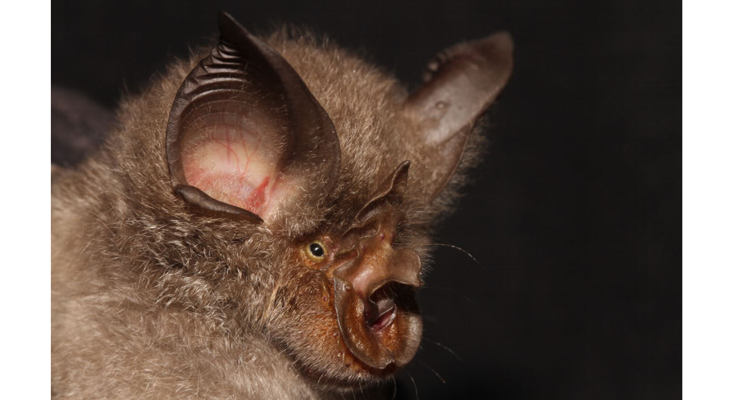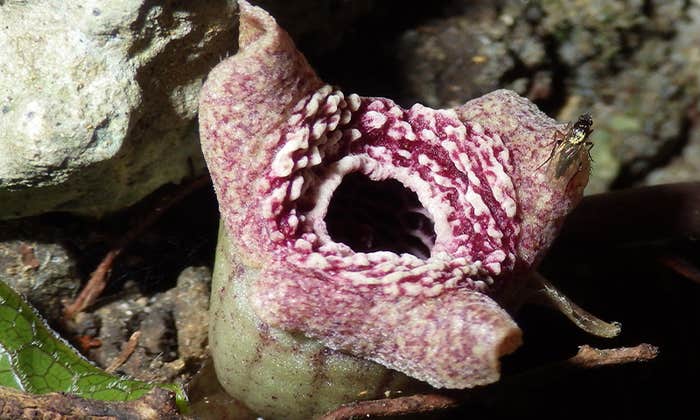Long before the first reports of a new flu-like illness in China’s Hubei province, a bat—or perhaps a whole colony of them—was flying around the region carrying a new type of coronavirus. At the time, the virus was not yet dangerous to humans. Then, around the end of November, it underwent a slight additional mutation, evolving into the viral strain we now call SARS-CoV-2. With that flip of viral RNA, so began the COVID-19 pandemic.
As in almost every outbreak, the mutations that set off this global crisis went undetected at first, even though the family of coronaviruses was already known to cause a variety of human diseases. “These viruses have long been understudied and have not been given the attention or funding they have deserved,” Craig Wilen, a virologist at Yale University, told me.
A bat coronavirus caused the SARS outbreak that terrified much of the world and killed 774 people in 2002 and 2003 before it was contained. Since then, there have been regular flare-ups of Middle East respiratory Syndrome or MERS, caused by another bat coronavirus that passes through camels; since 2012, it has killed 884 people. Most research on potential pandemics nevertheless continued to focus on influenza viruses, such as bird flu, because they carry a significant annual death toll. COVID-19 is exposing the dangers of such a single-minded approach.

A few scientists tried to sound the alarm. In a 2015 study, epidemiologist Ralph Baric and his colleagues at the University of North Carolina analyzed the genomes of bat coronaviruses and warned, “Our work suggests a potential risk of SARS-CoV re-emergence from viruses currently circulating in bat populations.”1 A second paper from the same group the next year warned that another SARS-like disease from bat coronaviruses was “poised for human emergence.”2
Bats are well known as a reservoir for potential new human diseases. The animals carry dozens, perhaps hundreds, of members of the coronavirus family. Most of those viruses are part of the bats’ normal microbiome, living in harmony with their hosts and causing no harm. But coronaviruses, like all forms of life, accumulate random genetic changes as they reproduce. Occasionally the mutations allow the viruses to infect other animals (including humans) and to score the big win in natural selection: producing ever-more descendants.
A win for the virus, that is. For us, not so much.
Two critical mutations in the bat coronavirus set us on the path to the COVID-19 pandemic. The first modified the structure of the spike-like structures that protrude from the virus. Those protrusions give the virus its family name: “Corona” means “crown” in Latin. The altered spikes allow the virus to latch onto a protein called ACE2, which lines the respiratory tract.3 The related virus responsible for the SARS epidemic employs a similar infection mechanism, as does another bat coronavirus that causes common colds in humans.
The second key mutation allowed the coronavirus to grow a protein dagger called a furin, which can slice through other proteins to make the virus bind tightly to throat and lung cells.4 The furin protein is what made the COVID-19 virus so infectious and deadly to humans. In that sense, SARS-CoV-2 is similar to anthrax and various bird flus that also rely on furins to carry out their infection.
Two critical mutations in the bat coronavirus set us on the path to COVID-19.
Those mutations could have occurred while the virus was circulating in bats. It’s also possible that one or both mutations could have erupted in a person who was infected by an earlier version of the virus, but who showed no symptoms. Most likely, there was an intermediate host between bats and humans. The pangolin, a creature prized in China for its meat and for the alleged medicinal value of its scales, is a strong candidate. Epidemiologists suspect that someone bought a pangolin at one of the “wet markets” in Wuhan and got infected consuming it, setting off the chain of transmission.
For now, this story of the emergence of COVID-19 is hypothesis. “I suspect we will never know,” Wilen said, because we don’t have enough samples of the viruses in bats, people, and potential intermediate hosts. But the narrative agrees with the ways that most pathogens transfer between species. This process of species-jumping, called zoonosis, accounts for 60 percent of human disease and 75 percent of newly emerging infections.
The narrative agrees, too, with detailed new studies of the virus using the tools of genetic epidemiology.5 Nature provides a convenient clock that aids the researchers trying to reconstruct the evolutionary history and development of viruses such as COVID-19. Every genome mutates at a predictable background rate. Most mutations yield no significant effects on the biology of the organism, but the tick-tick-tick of genetic changes allow scientists to construct the order in which different strains or species diverged from each other. With that information in hand, they can then construct a phylogenetic tree—a branching diagram that depicts the evolutionary relationships.
On January 10, a group of Chinese and Australian researchers published the first sequence of the (then-unnamed) new virus from the Wuhan outbreak on GenBank, a publicly accessible genetic data source. Other sequences from Wuhan quickly followed, allowing Trevor Bedford at the Fred Hutchinson Cancer Research Center in Seattle to start constructing a phylogenetic tree of the virus that we now call SARS-CoV-2.
So far, there is no sign the virus is becoming any more deadly or infectious.
If the outbreak was caused by several viruses that had emerged from multiple sources, there would be much genetic diversity. In reality, Bedford saw little. “From very early on, it was clear that the nCoV genomes lacked the expected genetic diversity that would occur with repeated zoonotic events from a diverse animal reservoir,” he said. His research progressed rapidly. On January 13, the first cases of COVID-19 appeared outside of China, in Thailand. Adding those two cases into his database, Bedford concluded that the world was facing an outbreak of a single, deadly new disease.
“The conclusion of sustained human-to-human spread became difficult to ignore on January 17, when novel coronavirus genomes from two Thai travel cases that reported no market exposure showed the same, limited genetic diversity,” he said. “This genomic data represented one of the first and strongest indications of sustained, epidemic spread. As this became clear to me, I spent the week of Jan 20 alerting every public health official I know.”
Almost no one listened. “I remember being flabbergasted by the continued narrow case definition and restricted testing,” Bedford recalled. The United States did not declare a state of emergency until March 13.
Bedford is now trying to assist with the next stages in containing and combating the COVID-19 pandemic. He and his team run a project called Nexstrain that tracks multiple pathogens, including flu, tuberculosis, West Nile virus, and now SARS-CoV-2. As of March 20, the phylogenetic tree for SARS-CoV-2 included 855 genome sequences of different strains. The genetic sequences catalogued in Nexstrain and other genomic databases will allow infectious disease specialists to monitor any worrisome changes to the virus.
So far, there is no sign that the virus is becoming any more deadly or infectious—although neither is it becoming any less so. Near-stasis is typical for a new human pathogen. From an evolutionary perspective, SARS-CoV-2 is already doing a great job of reproducing itself. It’s therefore feeling little evolutionary pressure to change. The viruses will just keep doing their thing until they are contained, or until they have killed their hosts.
A model for how COVID-19 might change comes from HIV/AIDS.
“Although none of the COVID-19 mutations look particularly interesting, there are a few things to watch for,” Bedford said. He is particularly vigilant in monitoring any mutations in the spike protein, which would have big implications for vaccine development.
Flu season illustrates the potential impact of viral mutations. Influenza viruses manage to infect people continually because the proteins on their surfaces keep changing. Your immune system fails to recognize the viruses’ reshuffled proteins, so you need a new flu shot every year. Fortunately, SARS-CoV-2 is quite a bit different. Flu viruses have a much smaller set of genes, and they circulate constantly between multiple species—pigs, birds, and people. Both attributes make mutations more likely in influenza than in coronaviruses, which contain one of the biggest RNA viral genomes and which jump across species barriers far less often.
A better model for how COVID-19 might change comes from the biggest pandemic of modern time: HIV/AIDS. Because of some of the most elegant genomic epidemiology work ever performed, we know that the ancestor of HIV had lived harmlessly in monkeys before jumping to chimps, probably through an ill-advised meal.6 In chimps, the virus evolved into something close to modern HIV. Around 1931, AIDS first appeared in a human in southwestern Cameroon; possibly someone was butchering a chimpanzee for food and got cut. HIV stayed rare among humans in rural Africa until entering the city of Kinshasa in what is now the Democratic Republic of the Congo. Once it reached an urban setting, transmission of the virus exploded, first there and then around the world.
When HIV was discovered in 1981, many people feared it would mutate into something even more deadly, possibly an airborne form. No one knew then that the virus had already been around for four decades without changing much. Another four decades later, HIV has not become any more deadly or infectious, yet it has still infected 75 million people and killed 32 million. Those are sobering numbers as we confront another disease that has jumped from animals to humans. Even if the COVID-19 virus proves to be slow-changing, like HIV, it may take years to get fully under control. And many more outbreaks of species-crossing disease are likely due to population growth and human encroachment on wild environments.
Will we learn our lessons? If you are a virologist, you will surely have a far easier time getting funds to study coronaviruses—for a while, at least. Almost every country is talking about beefing up its preparedness for another pandemic. And soon after the current outbreak began, the Chinese government shut down the sales of live animals for food and medicinal purposes in the loosely regulated wet markets.
Then again, China did the same after the SARS outbreak, when epidemiologists deduced that the virus started in bats and spread through a cat-like animal called a civet, also sold in the wet markets. Over the years, tradition and corruption quietly allowed the markets to reopen.
Robert Bazell is adjunct professor of Molecular, Cellular, and Developmental Biology at Yale. For 38 years, he was chief science correspondent for NBC News.
References
1. Menachery, V.D., et al. A SARS-like cluster of circulating bat coronaviruses shows potential for human emergence. Nature Medicine 21, 1508-1513 (2015).
2. Menachery, V.D., et al. SARS-like WIV1-CoV poised for human emergence. Proceedings of the National Academy of Sciences 113, 3048-3053 (2016).
3. Zhang, T., Wu, Q., & Zhang, Z. Probable pangolin origin of SARS-CoV-2 associated with the COVID-19 outbreak. Current Biology (2020). Retrieved from Doi:10.1016/j.cub.2020.03.022
4. Wang, Q., et al. A unique protease cleavage site predicted in the spike protein of the novel pneumonia coronavirus (2019-nCoV) potentially related to viral transmissibility. Virologica Sinica (2020).
5. Seyerle, A.A., MSPH, & Avery, C.L. Understanding genetic epidemiology: The potential benefits and challenges of genetics for improving human health. North Carolina Medical Journal 74, 505-508 (2013).
6. Sharp, P.M. & Hahn, B.H. Origins of HIV and the AIDS pandemic. Cold Spring Harbor Perspectives in Medicine (2011). Retrieved from Doi:10.1101/cshperspect.a006841
Lead image: Corona Borealis Studio / Shutterstock



























